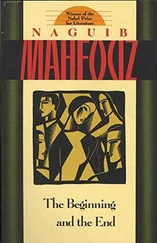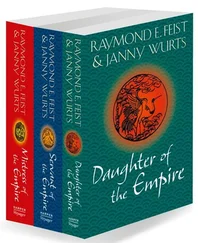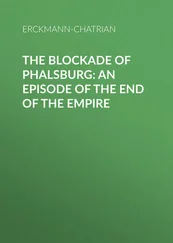Chalmers Johnson - The Sorrows of Empire - Militarism, Secrecy, and the End of the Republic
Здесь есть возможность читать онлайн «Chalmers Johnson - The Sorrows of Empire - Militarism, Secrecy, and the End of the Republic» весь текст электронной книги совершенно бесплатно (целиком полную версию без сокращений). В некоторых случаях можно слушать аудио, скачать через торрент в формате fb2 и присутствует краткое содержание. Год выпуска: 2003, ISBN: 2003, Издательство: Macmillan, Жанр: Старинная литература, на английском языке. Описание произведения, (предисловие) а так же отзывы посетителей доступны на портале библиотеки ЛибКат.
- Название:The Sorrows of Empire: Militarism, Secrecy, and the End of the Republic
- Автор:
- Издательство:Macmillan
- Жанр:
- Год:2003
- ISBN:9780805077971
- Рейтинг книги:4 / 5. Голосов: 1
-
Избранное:Добавить в избранное
- Отзывы:
-
Ваша оценка:
- 80
- 1
- 2
- 3
- 4
- 5
The Sorrows of Empire: Militarism, Secrecy, and the End of the Republic: краткое содержание, описание и аннотация
Предлагаем к чтению аннотацию, описание, краткое содержание или предисловие (зависит от того, что написал сам автор книги «The Sorrows of Empire: Militarism, Secrecy, and the End of the Republic»). Если вы не нашли необходимую информацию о книге — напишите в комментариях, мы постараемся отыскать её.
The Sorrows of Empire: Militarism, Secrecy, and the End of the Republic — читать онлайн бесплатно полную книгу (весь текст) целиком
Ниже представлен текст книги, разбитый по страницам. Система сохранения места последней прочитанной страницы, позволяет с удобством читать онлайн бесплатно книгу «The Sorrows of Empire: Militarism, Secrecy, and the End of the Republic», без необходимости каждый раз заново искать на чём Вы остановились. Поставьте закладку, и сможете в любой момент перейти на страницу, на которой закончили чтение.
Интервал:
Закладка:
Starting in approximately 1981, the United States introduced, under the cover of globalization, a new strategy intended to accomplish two major goals: first, to discredit state-assisted capitalism like Japan’s and prevent its spread to any countries other than the East Asian NICs, which had already industrialized by following the Japanese model; and second, to weaken the sovereignty of Third World nations so that they would become even more dependent on the largesse of the advanced capitalist nations and unable to organize themselves as a power bloc to negotiate equitably with the rich countries.
The United States’s chosen instruments for putting this strategy into effect were the World Bank and the International Monetary Fund (IMF). Like the General Agreement on Tariffs and Trade, the World Bank and the IMF were created after World War II to manage the international economy and prevent a recurrence of the beggar-thy-neighbor policies of the 1930s. What has to be understood is that both the fund and the bank are actually surrogates for the U.S. Treasury. They are both located at 19th and H Streets, Northwest, in Washington, DC, and their voting rules ensure that they can do nothing without the approval of the secretary of the Treasury. The political scientist Thomas Ferguson compares the IMF to the famous dog in the old RCA advertisements listening to “his master’s voice”—the Treasury—on a Victrola. 18
In addition to GATT, the IMF, and the World Bank, the postwar economic reformers created a truly innovative system of fixed exchange rates among the currencies of all the capitalist nations, so that, for example, from 1949 until 1971 one U.S. dollar could be exchanged for exactly 360 Japanese yen. This system was made credible by tying the value of each currency to the U.S. dollar and by an American guarantee that it would ultimately be willing, on request, to exchange all dollars for gold. Fixed exchange rates expanded international business by making trade stable and predictable, and they formed a major obstacle to the return of the ruinous speculation that had led to the Great Depression.
In this system, the IMF was charged with making loans to redress occasional imbalances between one nation’s currency and that of its trading partners (or, rarely, to help alter a fixed exchange rate in the direction of realism); and the World Bank was given responsibility for making developmental loans to countries that needed to invest in their infrastructures and infant industries in hopes of bringing them up to the level of the advanced nations. John Maynard Keynes, the English economic theorist and historian, first formulated the ideas behind these institutions, and at the end of World War II the leading Allies thrashed out compromises to bring them to life. The United States did not accept all of Keynes’s proposals, and its objections prevailed largely because of its immense wealth and power, but both the United States and Britain were agreed on a world economic order maintained by enlightened governments. The market was not “king.” It was only a widely accepted conventional means for individuals, households, and enterprises to exchange goods and services with one another at mutually acceptable prices. The system of fixed exchange rates, a currency adjustment agency, and a lender to the poor for economic development produced marvelous results during their first twenty years.
By 1971, however, the United States was no longer able to guarantee the fixed value of the dollar in gold. It had ruined its public finances by lavish spending on the Vietnam War, on nuclear weapons and their delivery systems, and on payments to countries that it feared might join the Communist camp or “go neutralist” if the United States stopped bankrolling them. In order to staunch the hemorrhaging of dollars, President Richard Nixon closed the American “gold window” by ending the system of fixed exchange rates. From then on, the currencies of the various nations were allowed to “float,” their values being set daily by supply and demand in international currency markets. With floating exchange rates, the market did indeed become king and governments took a backseat. The IMF and the World Bank were left with little to do for the rest of the decade.
The end of fixed exchange rates encouraged risky investments and speculation. Because profits could be huge and costs were low, American banks began to make large “overloans” (that is, loans well beyond the collateral on offer or their own reserves) to Third World countries. Banks like Citicorp and Bankers Trust were soon bringing in almost 80 percent of their revenue from risky overseas transactions. 19Many loans went to dictatorial or corrupt regimes, with little likelihood of ever being repaid. The banks nonetheless assumed that the governments of “developing countries” were not likely to go broke or, if they did, that some international institution would bail them out.
Thus was born the weird phenomenon of “moral hazard,” meaning American bankers could make outrageously irresponsible loans without any risk of having to absorb the loss or make good the money they had mismanaged. Before it was over, the 1970s loan bonanza produced a disaster of exactly the sort Keynes and the reformers at the end of World War II had sought to avoid. Virtually every country in Africa and Latin America was deeply in debt. In August 1982, Jésus Silva Herzog, the Mexican minister of finance, announced that his country was bankrupt and would no longer be able to pay interest on any of its loans. Just as the bankers had assumed, the U.S. government stepped in—not to save Mexico but to ensure that American banks did not collapse. At no time, then or later, did our government suggest that the people who made the bad loans bore some responsibility for the results.
In the early 1980s, following the international loan debacle, the United States put the IMF and the World Bank in charge of the Third World debt problem and essentially instructed them to do two things: keep the debtor countries paying something so that official defaults could be avoided and squeeze as much money out of them as possible. The two semimoribund institutions accepted their new role with alacrity, delighted to act as collection agencies for banks that had made bad loans. Thus were born the World Bank’s “structural adjustment loans” and the IMF’s “structural adjustment programs.”
Under structural adjustment, the World Bank lends funds to a debtor nation so that the nation can continue to “service” its debts in small, pro forma ways. As a condition for the loan, however, the IMF imposes a drastic socioeconomic overhaul of the country in accordance with the neoliberal agenda. If a debtor nation does not accept these terms, all access to international capital is denied it, thereby destabilizing its economy still further and perhaps setting it up for a CIA-abetted coup d’état. The overthrow of Salvador Allende in Chile in 1973 and the installation of the military dictatorship of General Augusto Pinochet were an early and classic example of this process, but there have been many others since. The entire Third World very quickly came under the supervision of the IMF’s economic ideologues, and by the late 1990s, close to ninety countries were being “structurally adjusted” by means of shock therapy ordered up in Washington. 20
In a typical structural adjustment program, the IMF and World Bank require that a country “liberalize” trade—that is, give foreigners free access to its economy. The country is also forced to reduce spending on social programs such as health care and education in order to release public funds to repay debts to foreign banks and transnational corporations. Subsidies to local agriculture are eliminated, usually rendering it unprofitable, while subsidies to agrobusinesses growing export crops such as flowers and fruits are increased. The IMF insists that the country drop all controls over the movements of capital and allow foreign investors and businesses to buy state-owned enterprises, such as electric power, telephone, transportation, natural resources, and energy companies. Perhaps most important, a country receiving a World Bank loan has to agree to maintain the convertibility of its currency—that is, it cannot prohibit the exchange of its own money for that of another country’s, which would temporarily halt the outflow of capital. Instead, maintaining free convertibility regardless of the exchange rate makes speculation about a currency’s future value possible. What a country gets out of such a mélange of “reforms” is not economic recovery, long-term growth, or stability but a government so weakened that it usually declines into a kleptocracy, experiences periodic economic collapses precipitated by rampant speculation (Mexico, 1994-95; Thailand, South Korea, and Indonesia, 1997; Brazil and Russia, 1998; Argentina, 2000; Venezuela, 2002), and is forced to rely on U.S. corporations to provide virtually all consumer products, employment, and even public services. 21
Читать дальшеИнтервал:
Закладка:
Похожие книги на «The Sorrows of Empire: Militarism, Secrecy, and the End of the Republic»
Представляем Вашему вниманию похожие книги на «The Sorrows of Empire: Militarism, Secrecy, and the End of the Republic» списком для выбора. Мы отобрали схожую по названию и смыслу литературу в надежде предоставить читателям больше вариантов отыскать новые, интересные, ещё непрочитанные произведения.
Обсуждение, отзывы о книге «The Sorrows of Empire: Militarism, Secrecy, and the End of the Republic» и просто собственные мнения читателей. Оставьте ваши комментарии, напишите, что Вы думаете о произведении, его смысле или главных героях. Укажите что конкретно понравилось, а что нет, и почему Вы так считаете.











